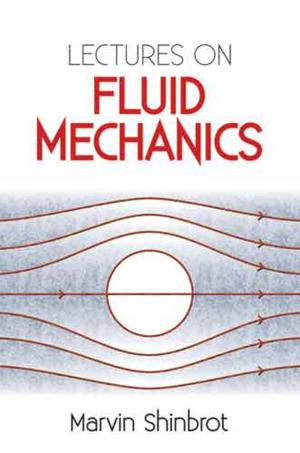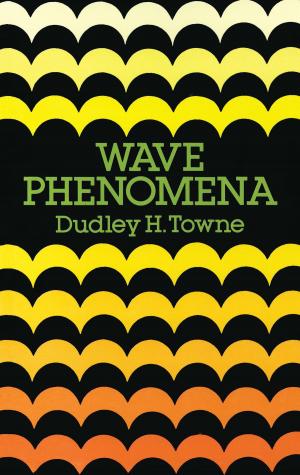| Author: | Melvin Schwartz | ISBN: | 9780486134673 |
| Publisher: | Dover Publications | Publication: | April 24, 2012 |
| Imprint: | Dover Publications | Language: | English |
| Author: | Melvin Schwartz |
| ISBN: | 9780486134673 |
| Publisher: | Dover Publications |
| Publication: | April 24, 2012 |
| Imprint: | Dover Publications |
| Language: | English |
Unlike most textbooks on electromagnetic theory, which treat electricity, magnetism, Coulomb's law and Faraday's law as almost independent subjects within the framework of the theory, this well-written text takes a relativistic point of view in which electric and magnetic fields are really different aspects of the same physical quantity.
Suitable for advanced undergraduates and graduate students, this volume offers a superb exposition of the essential unity of electromagnetism in its natural , relativistic framework while demonstrating the powerful constraint of relativistic invariance. It will be seen that all electromagnetism follows from electrostatics and from the requirement for the simplest laws allowable under the relativistic constraint. By means of these insights, the author hopes to encourage students to think about theories as yet undeveloped and to see this model as useful in other areas of physics.
After an introductory chapter establishing the mathematical background of the subject and a survey of some new mathematical ideas, the author reviews the principles of electrostatics. He then introduces Einstein's special theory of relativity and applies it throughout the rest of the book. Topics treated range from Gauss's theorem, Coulomb's law, the Faraday effect and Fresnel's equations to multiple expansion of the radiation field , interference and diffraction, waveguides and cavities and electric and magnetic susceptibility.
Carefully selected problems at the end of each chapter invite readers to test their grasp of the material. Professor Schwartz received his Ph.D. from Columbia University and has taught physics there and at Stanford University. He is perhaps best known for his experimental research in the field of high-energy physics and was a co-discoverer of the muon-type neutrino in 1962. He shared the 1988 Nobel Prize in Physics with Leon M. Lederman and Jack Steinberger.
Unlike most textbooks on electromagnetic theory, which treat electricity, magnetism, Coulomb's law and Faraday's law as almost independent subjects within the framework of the theory, this well-written text takes a relativistic point of view in which electric and magnetic fields are really different aspects of the same physical quantity.
Suitable for advanced undergraduates and graduate students, this volume offers a superb exposition of the essential unity of electromagnetism in its natural , relativistic framework while demonstrating the powerful constraint of relativistic invariance. It will be seen that all electromagnetism follows from electrostatics and from the requirement for the simplest laws allowable under the relativistic constraint. By means of these insights, the author hopes to encourage students to think about theories as yet undeveloped and to see this model as useful in other areas of physics.
After an introductory chapter establishing the mathematical background of the subject and a survey of some new mathematical ideas, the author reviews the principles of electrostatics. He then introduces Einstein's special theory of relativity and applies it throughout the rest of the book. Topics treated range from Gauss's theorem, Coulomb's law, the Faraday effect and Fresnel's equations to multiple expansion of the radiation field , interference and diffraction, waveguides and cavities and electric and magnetic susceptibility.
Carefully selected problems at the end of each chapter invite readers to test their grasp of the material. Professor Schwartz received his Ph.D. from Columbia University and has taught physics there and at Stanford University. He is perhaps best known for his experimental research in the field of high-energy physics and was a co-discoverer of the muon-type neutrino in 1962. He shared the 1988 Nobel Prize in Physics with Leon M. Lederman and Jack Steinberger.















